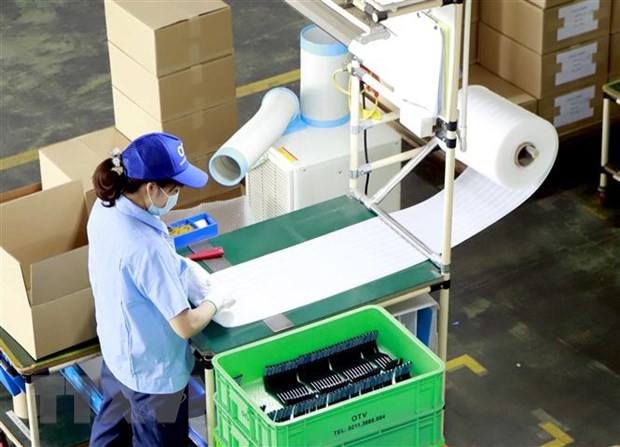Policies recommended to help ASEAN maximise benefits from RCEP
(VOVWORLD) -The ASEAN-Japan Centre (AJC) has released a paper on “ASEAN Global Value Chain and Its Relationship with RCEP: Impacts of RCEP on ASEAN Integration”, in which it recommends ASEAN to carry out five policy measures to benefit the most from RCEP.
 Manufacturing motorcycle components at Ohashi Tekko Vietnam Company, Binh Xuyen Industrial Park, Vinh Phuc. (Photo: VNA) Manufacturing motorcycle components at Ohashi Tekko Vietnam Company, Binh Xuyen Industrial Park, Vinh Phuc. (Photo: VNA) |
The paper examines and compares global value chain (GVC) patterns of ASEAN with those of RCEP (Regional Comprehensive Economic Partnership) to identify RCEP-related opportunities and costs to ASEAN.
According to the study, ASEAN member states are mainly producers of apparels which are final product exporters rather than intermediate producers. ASEAN countries can benefit from the RCEP agreement by expanding their imports of textiles from China.
ASEAN agribusiness and tourism are typically regional or domestic market-oriented industries that could penetrate both ASEAN and RCEP markets.
The direct impact of RCEP on trade and investment as measured by increases in value is estimated at 42 billion USD in exports and 900 million USD in FDI in the current value. These numbers correspond to 1.8 percent and 0.3 percent of current exports and FDI flows.
To maximise benefits from the RCEP agreement, the paper identifies the following five specific policy measures for ASEAN, including creating RCEP production network to widen value chains and promoting trade and investment; utilising existing production programmes and initiatives of RCEP member states; attracting foreign direct investments especially those that creates value chains from non-ASEAN RCEP member states; strengthening relationship with Japan since the country is seen to benefit more from the RCEP agreement than ASEAN; and developing parts and components of other RCEP member countries’ exports that are locked into the production lines of various GVCs.